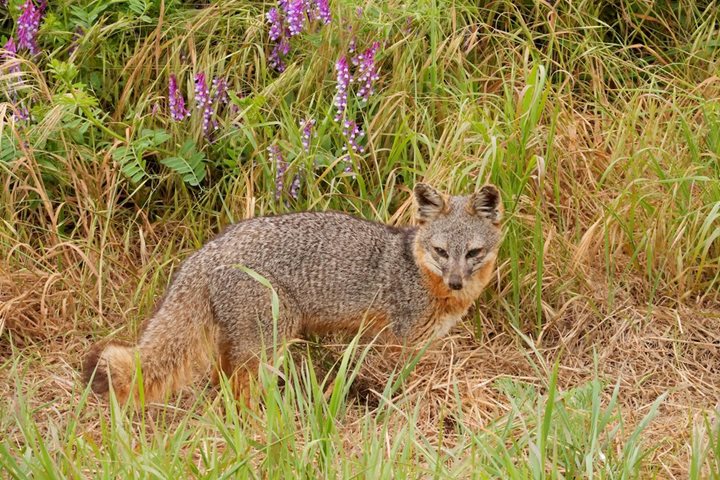Get to know North America's smallest fox
Order: Carnivora
Family: Canidae
Genus: Urocyon
Species: Urocyon littoralis
Range: Endemic to Southern California's Channel Islands, found on Santa Catalina, San Miguel, Santa Rosa, Santa Cruz, San Nicolas, and San Clemente islands
Population: Approximately 4,000
IUCN Red List Status: Near Threatened
Key Traits: Similar markings to gray fox: Mottled gray coloring on head and back; rust coloring on legs and framing head, white underbelly and neck; bushy tail; pointed ears; can reach 18 to 20 inches long and 2 to 5 pounds.
Well adapted to living on these remote islands off the coast of Southern California, the island fox is once again thriving after years of successful conservation work. Watch this video to learn more about this fast-moving, high-climbing mammal.
Read more
A descendent of the mainland gray fox, this cat-size carnivore has been endemic to the remote Channel Islands for more than 7,000 years. There are two main theories to explain how these land-dwelling mammals made the watery passage from the western shores of the United States to what is now California’s Channel Islands National Park.
In one, these foxes floated on debris and logs until they were stranded on the islands (much like how animals arrived in the Galápagos). The other is that they may have been carried there by the first people to inhabit the islands, the Chumash, who believed the fox was sacred.
Despite their once revered status, the island fox almost became extinct in the early aughts from a mix of environmental hazards, including diseases brought from the mainland.
Today, though, the foxes are a conservation success story, and their populations have all been restored. You can spot the friendly foxes most easily on Santa Cruz Island, which has the largest population, around 1,000—although a visit to Santa Catalina, San Miguel, Santa Rosa, San Nicolas, and San Clemente offers a chance to encounter them as well. Listen for dog-like barking and growling, and don’t just keep an eye on the ground for these small foxes, they have adapted to island life by being able to climb trees, which helps them forage for food.




